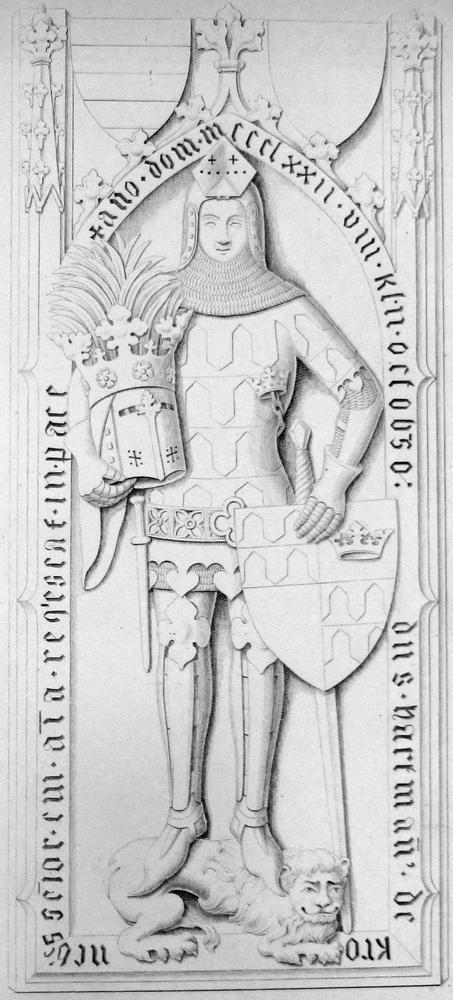
Find the perfect fit with Amazon Prime. Try Before You Buy.
Effigy of Hartmann von Kroneberg, German Knight, 1372AD. Kronenberg Castle chapel.



Name: Hartmann von Kroneberg
Dating: 1372
Location: Kronenberg Castle chapel, Taunus Mountains, North Rhine-Westphalia, Germany
From: Hefner-Alteneck, Jakob Heinrich von. 1854. Trachten des christlichen mittelalters. Volume 2. Hoff
Source: Effigies & Brasses
HARTMANN OF KRONEBERG Burial monument. This plate is a good example of the full knightly regalia of the time. Kroneberg wears mail covered by a leather surcoat with inlaid heraldic designs. Leather strips protect his arms and allow for movement. His poleyns are made of small, round pieces of iron, covered with leather decorations in the form of four-leafed flowers. Kroneberg’s lower legs are protected by iron strips held together by straps. The great helm is made partially of iron (front) and partially of leather (rear). Kroneberg’s helmet features a visor, an actual example of which may be seen on Plate 35.
d. 1372
Source: Medieval Arms and Armor: A Pictorial Archive By J. H. von Hefner-Alteneck
Referenced as fig. 105b in Armies of the Middle Ages, Volume 2 by Ian Heath:
A form of visor, usually referred to today by its modern name of Klappvisier, evolved from this in Germany c.1360; this was hinged by the middle of its top edge to a vertical bar similarly attached by 2 studs on the brow of the helmet. 105b shows such a visor, from the tomb effigy of Konrad von Kronenberg (d.1372).